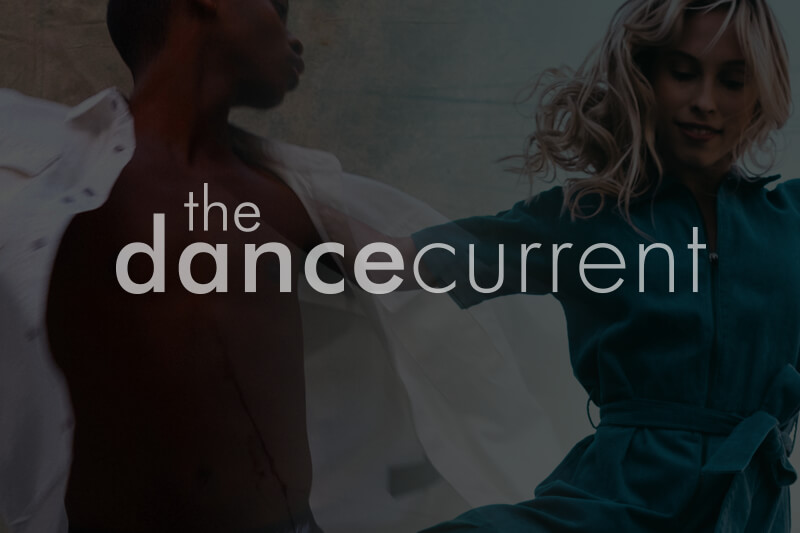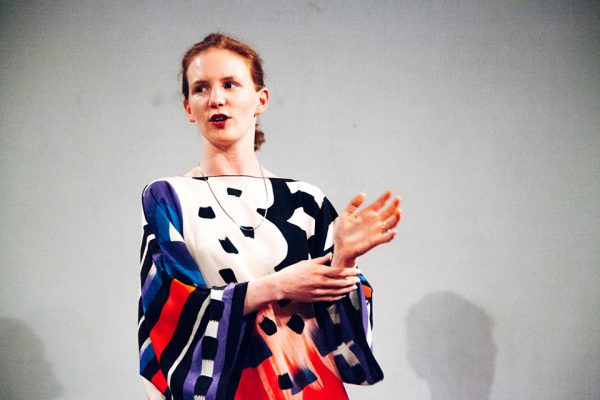This article is published through our Regional Reporter Program. We acknowledge the support of the Canada Council for the Arts through the Digital Now initiative. Video content in this article was produced with support from Canadian Heritage through the Business Innovation component of the Canadian Periodical Fund.
Hayley Ng has been dancing since the age of three. Today, she balances her passion for dance with her PhD studies at the University of Toronto’s Rehabilitation Sciences Institute and as a physiotherapy resident at North York General Hospital.
When the pandemic caused a ripple of closures in Ontario, Ng, like many dancers, couldn’t perform in front of live audiences. Forced to go digital, she started filming performances from home for places like the Myseum of Toronto and Youth Day Global.
This past April, Ng saw a changed world of performance as she prepared for her post-pandemic return to the stage. Ng had to re-adjust to in-person performance, revisiting aspects of performance like dancing without a face mask—a pandemic staple— working on her facial expressions, breathing and regaining her stamina.
But despite the hours of practice, the inevitable performance anxiety is still something with which Ng struggles.
“I think mindset is a very important component of performance because it can almost make or break you,” she says. “Which is unfortunate, because that’s almost like a vicious cycle. It makes you do worse when you start thinking negatively.”
To mitigate this cycle, Ng says she tells herself her performance on stage is just another rehearsal. This helps her to avoid focussing on the number of people watching and instead helps her imagine that she’s practicing as usual in a studio.
She adds that using different words in her head to help her focus on one part of her body at a time often helps manage her nerves. By distilling each difficult movement into a single mental instruction, Ng finds she reduces mental clutter.
“I think mindset is a very important component of performance because it can almost make or break you.”
Hayley Ng
Now, with in-person restrictions fully lifted, the emerging dancer is preparing for her second stage performance this summer at a local studio, performing Sleeping Beauty. With it comes butterflies in the stomach, brain fog and pre-performance nerves.
“Sometimes even on stage when I’m performing and I start thinking too much, it really does mess with me a bit. Like even something that was easy in the studio is all of a sudden so difficult,” says Ng. “And say my balance is thrown off or I forget something, the audience probably sees that I’m very tense.”
The concept of somatic awareness—being aware of your own self and body in its environment using sensations to ground yourself in the present— is an example of a mindfulness practice many dancers like Ng are adopting to combat nerves and performance anxiety as they return to in-person performances.
Mindfulness — defined by Oxford Languages as “focusing one’s awareness on the present moment, while calmly acknowledging and accepting one’s feelings, thoughts and bodily sensations”— stems from a very old practice rooted in Eastern religions like Hinduism, Buddhism and Islam.
Many core values and religious practices in Buddhism like yoga, Zen and Sati (a Pali word that means the “moment to moment awareness of present events”) have largely influenced the Western understanding of what we consider mindfulness.
Lisa-Marie Burka-Daniels, a patient care manager for Halton Healthcare and dance instructor for kids competitive dance, began to notice throughout her 25 years of teaching that her students were becoming consumed by their anxieties during class.
Introduced to yoga 20 years ago after a hamstring injury, yoga and meditation practice became a healing therapy for Burka-Daniels. Her mother, a yoga instructor, taught her about deep breathing and mindfulness, and she has since integrated it into her dance classes to help her students break down their walls and open themselves up to create freely.
Though she says trying to calm down energetic eleven-year-old movers can be difficult, she practices grounding exercises by laying them on their backs in a dark, silent studio and walks them through being able to articulate, isolate and feel every part of their body.
“I flip them over, and pre-COVID, I would push down on their back so they could feel sort of what that felt like to get that further grounding,” says Burka-Daniels. “And we’ve used that technique at the end of class to allow them to kind of leave with an open mind and not like their brains [are] going and spinning.”
She says using mindfulness tactics like deep breathing and focusing on sensations to teach the young dancers to re-focus their energy and activate their minds made it easier to speak about different parts of the body when teaching choreography or technique.
“Because they’re used to just concentrating and focusing on that one area; we’re talking about shoulders and shoulders falling into the floor and as your breathing is going up and down,” she says. “Then when we’re talking about shoulders in pirouettes or shoulders creeping up [during] technique classes in ballet, they have a different approach to that now.”
The more she went over these practices with her students, Burka-Daniels noticed that the kids would look forward to doing mindfulness before the end of class and for longer periods and started to apply those tools outside of class.
“I think the mindfulness part of all of this is really allowing and hoping that people use that in a way to slow down and to really start to enjoy everything that they do,” says Burka-Daniels.
“You want to give them the best shot of being who they are and bringing themselves to the stage.”
The benefits of mindfulness can include decreased symptoms of anxiety and depression, improved concentration and mental clarity.
With the constraints on time that come with a busy life, a 2010 study by Consciousness and Cognition Journal found that most people don’t have the time or resources to engage in extensive meditation practices and “few will choose the monastic lifestyle that is often associated with Buddhist contemplatives.” But those who studied brief mindfulness training significantly improved their visuospatial processing, working memory and executive functioning.
Mental health and its subsequent effects on the mind and body are familiar to Farleena Khan, a Toronto-based dancer who has trained in ballet, jazz, tap and hip-hop since the age of 14.
While battling mental struggles like attention deficit hyperactivity disorder (ADHD), body dysphoria disorder, social anxiety and depression, and dealing with a family who she felt did not support her dreams, Khan found that dance became an important aspect of her life growing up.
In 2018, after experiencing abuse and harassment from dance instructors and burnout that contributed to a mental breakdown for almost three weeks (during which she could not stomach food), Khan stopped dancing and shortly after fell into a deep depression.
“All my self-worth was in dancing,” says Khan.
Though she was exposed to some mindfulness practices like deep breathing and meditation during her time doing yoga as a child, it was during a class with an acting coach that she was reminded of the importance of meditation. She began to reintroduce herself to mindfulness through her coach’s recommended readings.
“With meditation, I started to really slow down in life. Instead of constant speed and hustle, I gave myself rest and breaks, a lot of solitude, which was important for me. And it helped me notice the really small things that I never noticed before,” says Khan.
Now in a better mental space, due in part to her meditative practices and taking a break to re-centre her mental health, she has taken this year to slowly get back into dancing while pursuing her other passions.
“When the pandemic happened, for me, it was surprisingly fine. Because… everything that most people struggled with during the pandemic, I went through in 2018,” she says. “Horrible weight loss and weight gain, depression, unemployment and increasing anxiety… So I was so prepared for this. And I did a lot of spiritual things like meditations, breathwork, and a crazy amount of stuff to really rebuild my mind and body to handle everything and heal.”
To maintain her routine, she practices meditation every day in the morning through mindfulness practices like yin yoga and positive affirmation. She even gives herself a no-brain day during which she will not engage in any brain-stimulating activities like answering emails for one day each week.
“We’re constantly looking left or right for a car or making sure the stranger near us doesn’t hurt us; our brains are constantly on. And so, a no-brain day would mean putting your mind on autopilot as best as possible,” she says. “Doing that helps decompress the body and the brain. And that kind of opens the channels to creativity a lot more.”
Sally Dwyer, a registered psychotherapist and mindfulness instructor based in Hamilton, says mindful practices can be categorized under formal and informal practices. Formal practices can be described as traditional meditation that can include ten to 15 minutes of repeating positive mantras or “simply by tracking your breath or ambient sounds,” she says.
Informal practices, which she says often get overlooked, are simple practices “where you just come back to the moment you’re in with your senses.”
“There is such a direct link between your body and your being… And I think a lot of us at different times have lived a short distance from our bodies. So much of what we think and feel is stored in the body,”
Sally Dwyer
“We can do that any number of ways: could be something as simple as washing the dishes. [You] could tune into the temperature of the water on your hands, iridescence in the bubbles, the smell of the soap and come back to the present moment,” says Dwyer.
Most of us, including dancers, Dwyer says, often experience anticipatory anxiety which could cause issues before performing. She says this can be combated by leaning on formal meditation practices, like those offered through services like Insight Timer, a free meditation app with an accessible library for guided meditations and music.
For dancers experiencing anxiety in the moment before a performance, she adds that a good practice to introduce is what she refers to as a “self-compassion break”: a three-step exercise that starts with tuning into your body and gaining awareness of the emotions you’re feeling at the time without judgment. The second part she calls “common humanity”, which refers to accepting the idea that anyone in your shoes would be experiencing anxiety, and society as a whole shares the same types of anxiety and suffering. The last part, called “remedy”, is a self-kindness talk in which you put your hand on the part of your body where you feel the most anxiety and tell yourself the type of kind words and gentle affirmations you would say to a friend.
“I think everyone could use mindfulness. I think dancers especially because somatic awareness is so very important. I imagine that dance is probably really informed by your emotional awareness of the content of the dance and things like that, too,” Dwyer says. “So the more you can be fully present in your body and aware of what’s happening I imagine that it would be a richer experience for dancing.”
In Mindful Movement: The Evolution of the Somatic Arts and Conscious Action, Martha Eddy, an exercise physiologist and somatic therapist, argues that dancers can improve their technique, enhance their expression while dancing and experience greater self-development through somatic practices.
“I think everyone could use mindfulness. I think dancers especially because somatic awareness is so very important. I imagine that dance is probably really informed by your emotional awareness of the content of the dance and things like that, too.”
Sally Dwyer
Eddy actually credits dance professionals in driving the development of somatic movement and the field of Somatic Movement Education and Therapy (SME&T), which involves “listening to the body and responding to these sensations by consciously altering movement habits and movement choices.”
The goal of these practices is to heighten both sensory and motor awareness to facilitate one’s own self-organization, self-healing or self-knowing.
Although there is limited research as to which mindfulness practices most benefit dancers and their performance, the ability to focus on the body and take the time to nurture mental health can have positive effects on anyone, even if they’re not a performer.
“There is such a direct link between your body and your being… And I think a lot of us at different times have lived a short distance from our bodies. So much of what we think and feel is stored in the body,” says Dwyer.
“If we can find out and contact it more precisely… is it a pain in the gut or the heart? Whatever it is, we can work with it. Because emotions move so much more slowly in the body,” she says.
With the pandemic forcibly putting life on pause, increasing Google searches for mindfulness practices, and the growing popularity of apps like Headspace this year, suggest more people are looking for ways to slow down their busy minds.
“I think there’s a light that’s now shed on mental health in general, and I think people working with children are well aware of the struggles or the challenges that have been coming up through everything,” says Burka-Daniels. “I don’t think we’re a society that understands mindfulness because we’re not a society that slows down.”
Burka-Daniels argues that one positive effect of the recent pandemic has been an increased awareness for many of the need to slow down. “But I don’t think it’s something in the dance community that has necessarily been spoken about or articulated that way,” she says.
“I think there’s a light that’s now shed on mental health in general, and I think people working with children are well aware of the struggles or the challenges that have been coming up through everything… I don’t think we’re a society that understands mindfulness because we’re not a society that slows down.”
Lisa-Marie Burka-Daniels
With the help of meditation and mindfulness, Khan says she has been able to overcome some of her mental health issues and her fears of what taking a break from dancing would do for her body.
“If your mind is unhealthy, your body is unhealthy… I’ve had to undo a lot of the workaholic mindset that I used to have… I took a break, and I somehow became more flexible,” says Khan. “I somehow became more confident. My body now is doing moves that I couldn’t do before all of a sudden, even without training, it didn’t feel like I lost anything. And it was because I healed so many parts of my mind that my body was able to follow that.”
Dance Media Group strengthens the dance sector through dialogue. Can you help us sustain national, accessible dance coverage? Your contribution supports writers, illustrators, photographers and dancers as they tell their own stories. Dance Media Group is a charitable non-profit organization publishing The Dance Current in print and online.

Tagged:





